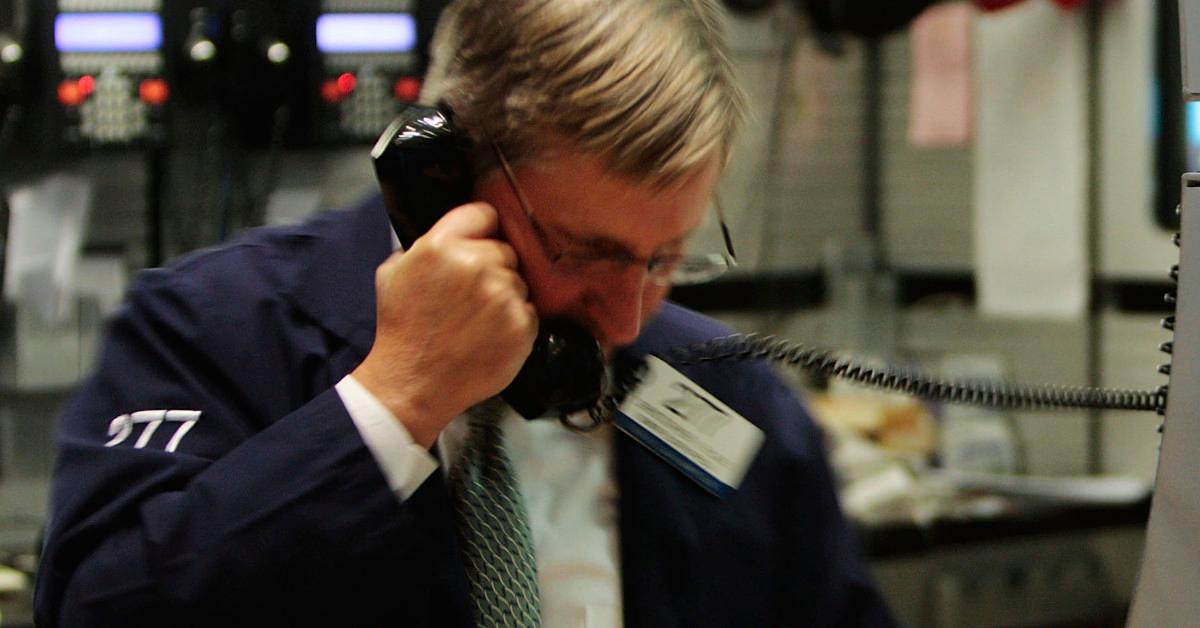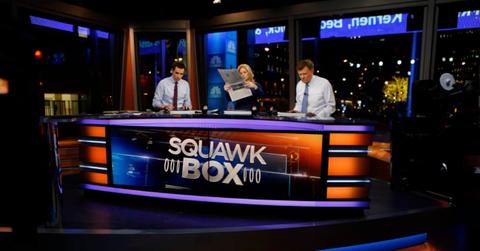We Should Be Glad CNBC’s ‘Squawk Box’ Isn’t Called ‘Hoot ’n’ Holler’
What does ‘Squawk Box’ mean? The term might have been better known in 1995, when the CNBC morning news and talk program debuted.
July 7 2021, Published 10:42 a.m. ET
For CNBC viewers, especially those born after 2000, Squawk Box might not the most obvious title for a morning news and talk program the cable channel calls a “‘must see’ for everyone from the professional trader to the casual investor.” What does Squawk Box even mean?
On Reddit, the question stumped some users. “Never heard of a squawk box,” one user commented. Another person wrote, “It is a box that does little more than squawk at you. Pretty self-explanatory.”
A third said the term is “old-timey slang for a telephone or a two-way radio,” while one Redditor seems to have set the record straight: “It refers to an old form of intercom that used to be on trading desks in Wall Street. The other answers are all wrong.”
Squawk boxes are part of the “hoot ’n’ holler” systems that became prevalent on Wall Street
As the Hartford Courant explained in 1995—the same year that CNBC started airing the show—a “squawk box” is a speaker box that’s part of a system colloquially called “hoot ’n’ holler,” which keeps Wall Street traders in touch at all times.

“Basically, the system consists of a telephone set and a small speaker box, both patched to an open telephone circuit. This system operates apart from the standard telephone system,” the newspaper explained. “Any number of telephone installations can be spliced onto that line, making it possible to pick up the receiver and talk to anyone on it—a throwback to the days of telephone party lines.”
In a 2017 case study, Essential Trading Systems explained that a hoot ’n’ holler system is an interoffice intercom that “allows regular communication with satellite offices and disperses information such as the morning market report to traders and brokers.”
The company—which was promoting the use of VOiP technology over analogy technology for these purposes—added that hoot ’n’ holler systems are “used to talk to clients and shout orders to the trading floor” and that “a typical brokerage firm has several of these networks for each business group: equities, retail, and bonds.”
Hoot ’n’ holler systems became popular in the 1980s
Telaid Industries got around 500 Merrill Lynch offices connected to hoot ’n’ holler systems by 1993, according to the Courant, and Bear Stearns, Goldman Sachs, Dean Witter, Prudential Securities, Advest, and Smith Barney followed suit in the next few years. Telaid’s Paul Berry told the newspaper that brokers could use hoot ’n’ holler systems to listen in on the “ambiance” and “very subtle nuances” on the floor of the New York Stock Exchange and the American Stock Exchange.
Of course, that’s assuming the power is on. The New York Times mentioned squawk boxes in 1990 when an electrical substation fire shut down much of Wall Street. “The blackout forced the closing of the American Stock Exchange and the five New York futures exchanges. The bond market and foreign-exchange trading slowed because broker intermediaries who supply prices for buyers and sellers were cut off, their squawk-box intercoms suddenly quiet, their computers no longer humming.”
Technological innovations have surged ahead since then, of course, but CNBC is still banking on the Squawk name: The channel also hosts Squawk on the Street, and it aired Squawk Alley until that program was replaced by TechCheck.

